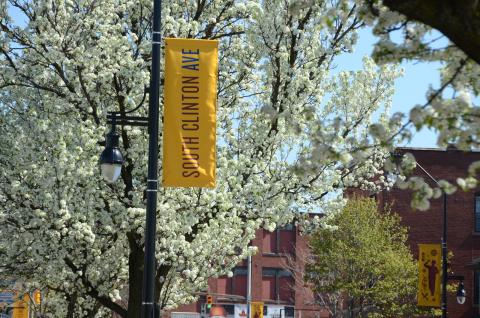Highland Reservoir Improvement Project
Bilateral Compliance Agreement
Since 2012, the City has been operating under the terms of a Bilateral Compliance Agreement (BCA) with the Monroe County Department of Public Health (MCDPH) and the New York State Department of Health (NYSDOH).
What is the BCA?
The BCA is a signed agreement between the City of Rochester, Monroe County Department of Public Health, and the New York State Department of Health, which outlines commitments and deadlines for the City of Rochester to bring its facilities into compliance with LT2. Enforcement actions and penalties due to the LT2 regulations are deferred as long as the City of Rochester meets the conditions of the agreement.
Why is this study happening?
In March 2006, the USEPA adopted a new regulation known as LT2. Part of LT2 requires that Public Water Systems which store water in an open finished reservoir to either install a cover or treat the water to insure adequate inactivation of viruses and parasites. Although LT2 is the primary driver of this study, there is a need to improve reservoir conditions, which are adversely impacted by various environmental factors. These conditions leads to additional operations costs and also diminishes water quality.
The purpose of this study to investigate options for addressing LT2 and improving other unique water quality and operational challenges associated with Highland Reservoir, including deposition of seeds, leaves and pollen from nearby trees. LT2 compliance options to be evaluated will include: covering the reservoir, replacing it with a tank, removing the reservoir from service and several treatment methods. Consideration will also be given to extending the current BCA.
If the City does not comply with the LT2 requirements, the City could be subject to a fine by MCDOPH and NYSDOH.
Learn more about the EPA's LT2 Rule
Operational constraints
Highland Reservoir faces unique challenges for operations and maintenance as well as water quality due to the arboretum that surrounds the reservoir. The trees surrounding the reservoir deposit large quantities of seeds, pollen, leaves and other material in the reservoir throughout the year.
The spring and fall seasons present especially difficult operational challenges. In spring, sycamore seeds and cottonwood dander frequently plug the reservoir outlet screens (wedge wire screens).
Throughout the fall, leaves settle to the bottom of the reservoir, often clogging the outlet screens. In addition, too many leaves can lead to water quality issues such as algae and bacteria growth. Removal of the leaves is a highly labor-intensive operation and must be performed several times throughout the year. This cleaning process requires shutting off Highland Reservoir for periods of time. Wind and storm events can disturb accumulated leaves and other vegetative matter causing additional plugging of the reservoir outlet screens.
- Installation of a full cover;
- Installation of ultraviolet light disinfection to inactivate potential contaminants;
- Installation of membrane filtration to remove potential contaminants;
- Installation of a buried concrete storage tank;
- Use of ozone or chlorine dioxide disinfection to inactivate potential contaminants; or
- Removing the reservoir from service
Each potential solution has different water quality, aesthetic, cost, and operational impacts for the Reservoir, water system, and different impacts to the environs. In addition to complying with LT2, some of the potential alternatives will also significantly improve water reliability, reduce the operational requirements of the City of Rochester and result in improved water quality. This would benefit rate payers and city residents. Finally, this project also aims to increase the resilience of the system by improving safety and security risks associated with uncovered finished water reservoirs.
Project schedule
| Date | Activity |
| Summer 2024 | Project Kick-Off Stakeholder Outreach Data Collection Alternatives Analysis |
| Fall 2024 | Public Workshop #1 Stakeholder Outreach Alternatives Analysis |
| Winter 2024-45 | Stakeholder Outreach Alternatives Analysis Environmental Assessments Report Development |
| Spring 2025 | Public Workshop #2 Stakeholder Outreach Environmental Assessments Report Development |
| Summer 2025 | Stakeholder Outreach Environmental Assessments Report Development |
| Fall 2025 | Stakeholder Outreach Environmental Assessments Report Development |
| Winter 2025 | Stakeholder Outreach Report Development |
| Spring-Summer 2026 | Final Report Completion Final Recommendations |
Public events
Highland Reservoir is a significant landmark of the community located within a prominent County Park. Public engagement is a crucial part of this project to ensure the community is well-informed and have many opportunities to provide feedback.
This section of this webpage provides information on upcoming engagement opportunities as well as past engagement events.
We look forward to hearing your feedback on this project!
Upcoming events
Residents can learn more about the project and provide their input to City officials at 6 p.m., Tuesday October 29, 2024, at the Olmsted Lodge in Highland Park, 171 Reservoir Ave.








